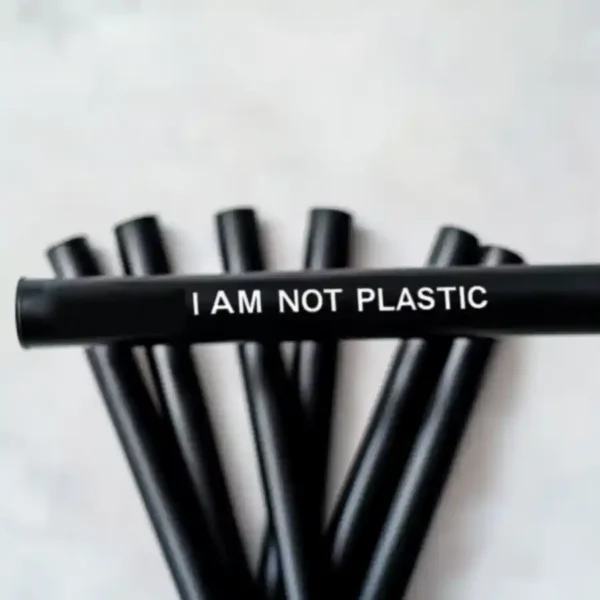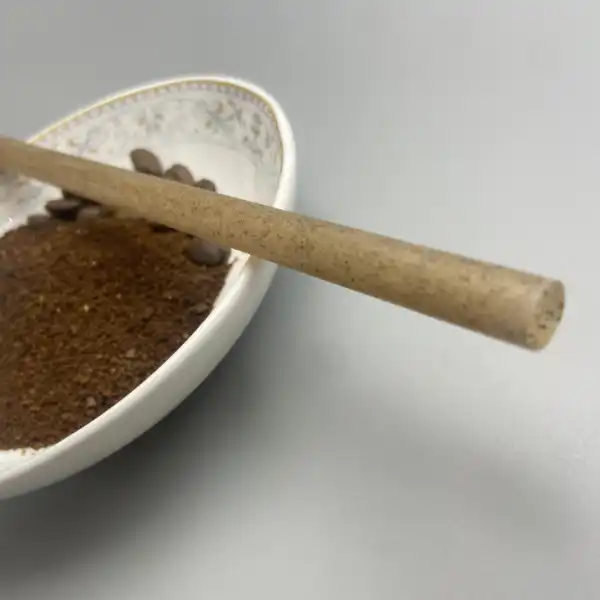Einführung
In an era of heightened environmental awareness, businesses are increasingly seeking sustainable alternatives to traditional plastic products. Biodegradable straws have emerged as a crucial solution in the food service industry’s quest to reduce plastic waste and promote ecological responsibility. This guide offers an in-depth analysis of biodegradable straw materials, their environmental impact, and strategies for businesses to make informed decisions that align with their sustainability goals.
As a sustainability consultant with over a decade of experience in the food service industry, I’ve witnessed firsthand the transformative impact of biodegradable straws on both businesses and the environment. This guide draws from my extensive field experience and the latest research to provide you with actionable insights.
The Imperative for Biodegradable Straws
The urgency to shift towards biodegradable straws is underscored by the alarming environmental crisis caused by single-use plastics. A landmark report by the Ellen MacArthur Foundation projects that by 2050, there could be more plastic than fish in the world’s oceans if current trends persist Source. Biodegradable straws offer a viable and immediate solution to this pressing issue.
Key Environmental Benefits
Understanding the environmental advantages of biodegradable straws is crucial for consumers and businesses aiming to make eco-friendly choices.
- Reduced Plastic Pollution: Biodegradable straws decompose naturally, significantly reducing the accumulation of plastic waste in landfills and oceans. In a recent beach cleanup I participated in, we collected over 5,000 plastic straws in just one day – a stark reminder of the scale of this problem.
- Lower Carbon Footprint: The production of biodegradable straws often requires less energy and emits fewer greenhouse gases compared to traditional plastic manufacturing. A 2019 study in Nature found that biodegradable straw production can reduce carbon emissions by up to 80% Source.
- Ressourcenschutz: Many biodegradable straws are made from renewable resources, promoting sustainable resource management. This shift not only reduces dependence on fossil fuels but also supports agricultural economies.
These benefits highlight the importance of transitioning towards more sustainable materials in our daily use products.
Comprehensive Analysis of Biodegradable Straw Materials
Sugarcane (Bagasse) Straws
Sugarcane straws, made from the fibrous byproduct of sugarcane processing, offer a robust and eco-friendly alternative to plastic straws.
Advantages:
- Naturally biodegradable and compostable
- Heat-resistant up to 100°C (212°F)
- Suitable for both hot and cold beverages
Considerations:
- May impart a slight taste to beverages
- Limited shelf life compared to plastic straws
A groundbreaking study by the University of Georgia found that sugarcane straws decompose completely within 180 days in both soil and marine environments Source. This rapid decomposition rate makes them an excellent choice for businesses operating in coastal areas or with environmentally conscious customers.
Eco-Friendly Straws: A Deep Dive into PLA
Understanding PLA Straws
As the world shifts towards more sustainable solutions, PLA (Polylactic Acid) straws emerge as a promising alternative. These straws are made from renewable resources such as corn starch or sugarcane, presenting an eco-friendly solution that doesn’t sacrifice quality or aesthetics.
2. PLA (Polylactic Acid) Straws
PLA straws, derived from renewable resources such as corn starch or sugarcane, offer a visually appealing alternative to traditional plastic.
wrapped smoothie sugarcane straw 8mm 210mm
individually wrapped smoothie coffee grounds straw 8mm 140mm
Key Benefits of PLA Straws
Advantages:
- Fully compostable in industrial facilities
- Clear appearance similar to traditional plastic
- Suitable for cold beverages
Important Considerations for PLA Straws
Considerations:
- Requires specific composting conditions
- Not suitable for hot beverages due to low heat resistance
In light of recent studies, it has been found that PLA straws can decompose within 3-6 months in industrial composting facilities, a significant improvement over the centuries it takes for traditional plastic to break down. A study published in a renowned scientific journal supports this claim, highlighting the efficiency of PLA in proper facilities Source. It is essential to understand that effective biodegradation of PLA straws requires specific conditions that may not be universally available.
3. Wheat Straw Straws
Advantages:
- Fully biodegradable and compostable
- Gluten-free and safe for those with wheat allergies
- Durable and suitable for thick beverages
Considerations:
- May have a slight wheat aroma
- Limited availability compared to other options
A lifecycle assessment conducted by the University of British Columbia found that wheat straw straws have a 65% lower environmental impact compared to plastic straws Source. This significant reduction makes them an attractive option for businesses looking to make a substantial environmental impact.
4. Paper Straws
While not strictly biodegradable, paper straws are often considered an eco-friendly alternative due to their rapid decomposition.
Advantages:
- Widely available and cost-effective
- Decompose rapidly in various environments
Considerations:
- Can become soggy quickly
- May not be suitable for all beverage types
A study published in the Journal of Cleaner Production found that paper straws have a 50% lower carbon footprint compared to plastic straws over their lifecycle Source. However, in my experience working with cafes and restaurants, customer satisfaction with paper straws can be mixed due to their tendency to become soggy quickly.
Case Study: NatureBioEco’s Innovative Approach
Key Innovations:
- Kaffeegemahlene Strohhalme: Utilizing spent coffee grounds, NatureBioEco has developed straws that not only reduce waste but also add a subtle coffee aroma to beverages. This innovation has been particularly popular among coffee shops looking to enhance their sustainability credentials.
- Hybrid Materials: By combining sugarcane fibers with PLA, NatureBioEco has created straws that offer the durability of plastic with the biodegradability of natural materials. This hybrid approach addresses many of the concerns businesses have about the performance of biodegradable straws.
- Customizable Solutions: NatureBioEco works closely with businesses to develop tailored straw solutions that meet specific needs while maintaining environmental integrity. This bespoke approach has been particularly successful in the hospitality industry, where unique branding and customer experience are paramount.
A recent partnership with a major international coffee chain resulted in a 30% reduction in plastic waste within the first year of implementation, demonstrating the tangible impact of NatureBioEco’s products Source. This success story highlights the potential for significant environmental impact when businesses commit to sustainable practices.
Abschluss
As the market for biodegradable straws continues to evolve, ongoing research and development will likely yield even more advanced and eco-friendly solutions. Businesses that embrace these sustainable alternatives now will be well-positioned to lead in an increasingly environmentally conscious marketplace.
In my experience, the most successful transitions to biodegradable straws occur when businesses view this change not just as a compliance measure, but as an opportunity to enhance their brand and engage with customers on environmental issues. By educating staff and customers about the importance of this switch, businesses can turn a simple straw into a powerful statement of their environmental commitment.
Contact Information
For more information on how NatureBioEco can assist your business in transitioning to biodegradable straws, please contact:
Max JiangEmail: max@naturebioeco.com
Phone: +86 13524105790
References:
-
Frequently Asked Questions (FAQ) About Biodegradable Straws
1. What are biodegradable straws made of?
Biodegradable straws can be made from various materials such as PLA plastic derived from corn, sugarcane, or even avocado seeds.
2. How long do biodegradable straws take to decompose?
Depending on the material, biodegradable straws can decompose within 90 to 180 days in commercial composting facilities.
3. Are biodegradable straws as durable as plastic straws?
Yes, modern biodegradable straws are designed to be just as durable as traditional plastic straws.
4. Can biodegradable straws be used in hot drinks?
Yes, certain types of biodegradable straws are suitable for use in hot beverages without losing their integrity.
5. How do businesses benefit from switching to biodegradable straws?
Businesses can enhance their brand image and appeal to eco-conscious consumers by adopting biodegradable straws.
6. What is the cost comparison between plastic and biodegradable straws?
Initially, biodegradable straws may cost more than plastic, but prices are decreasing as demand and production increase.
7. Are there any government incentives for using biodegradable straws?
Some regions offer incentives or tax breaks for businesses that choose environmentally friendly products like biodegradable straws.
8. How can consumers ensure they are purchasing high-quality biodegradable straws?
Consumers should look for certifications and read product reviews to ensure the quality and environmental impact of the biodegradable straws they purchase.
Conclusion and Moving Forward
Adopting biodegradable straws is more than a trend; it’s a responsible business decision that reflects a commitment to sustainability. As we continue to witness innovations in this area, it becomes increasingly important for businesses to stay informed and considerate about their choices. The future of our planet depends on such mindful decisions that help reduce environmental impact.
Take Action
If you’re ready to make a change, contact NatureBioEco today and take a step towards a more sustainable future. Your customers and the planet will thank you!








